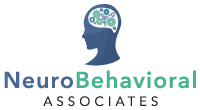Steps that can help with Children that have been diagnosed with ADHD, ASD, and ID
The new school year is always tough, and the last two years are particularly hard. Children with ADHD, ASD, and ID, may find the adjustment back to class particularly difficult. Going from one on one attention from parents or tutors and less distraction at home to being back in school can lead to increased behavioral issues.
They are now able to interact with their friends and staff again and now, just as they are getting settled in, holiday breaks are on the way, and making sure there are no setbacks is as important now as they were when the school year started.
By making sure that you have followed some of the guidelines below, the transition will be smoother.
Preparing for School
The first step is to make sure that you have had all meetings with the school, with teachers, counselors, etc. to ensure that your child’s I.E.P. (Individualized Education Plan) is in place and up to date. New technologies may have become available for your child, as well as tools that you can utilize at home to keep them on track and progressing.
Even if your child’s I.E.P isn’t up for review at the beginning of the year, you can set up meetings with their teachers, school psychologist, therapists, etc. Being involved in the process helps you to help them.
Talk to the teachers. You have insights they may not have and visa versa. You don’t have to be a helicopter parent to be involved. Your goal isn’t to take over their education, but to become involved in it and assist their teachers in providing the best environment possible.
Planning playdates with classmates can be a huge benefit to your child. A short get-together with organized activities, like crafts or physical activities, and snack time, can make your child, and their friends more at ease in the classroom.
Keep the playdates small, no more than three kids total and try to set a regular schedule.
Creating plans and setting a schedule. Children who are involved in setting a schedule, for chores, homework, and hygiene, are provided a sense of control. It allows them to be more productive and less anxious.
When setting a schedule, talk to your children about what will happen if the schedule can’t or isn’t followed. They need to be involved in the alternate plans as well as the consequences.
Organize your child’s environment with them. Their school supplies, their clothes, and their room can be organized in a way that suits their individual needs while giving them access to what they need.
Set a routine. This isn’t the same as creating plans and setting a schedule. Regular wake-up times, break times, and bedtimes, all work to establish a system that creates comfort for your child. A routine should be established around the household schedule and remain consistent throughout breaks for the holidays, spring, and summer. Again, take the time to talk about any changes in the routine beforehand.
Some additional thoughts are to
- have analog clocks so your child can see time passing,
- use an actual alarm clock, not their phone,
- limit their time on devices with screens,
- find relaxation and exercise programs that can be added to their schedule,
- and keep track of their diet.
The most important thing is to stay involved and keep your child involved. By using some of these simple steps you can make their time at school and their time at home more enjoyable and more productive.
For more information and resources visit our website and contact NeuroBehavioral Associates today to learn more about how we can help make this the best school year possible!
- ADHD and the Classroom: 6 Tips to Prep – Healthline
- “How Should We Prepare for School Before It Starts?” – ADDitude Magazine
- Back to School Issues for Children on the Autism Spectrum – Autism Society
- Easing the back-to-school transition for children with disabilities – The University of Alabama at Birmingham






